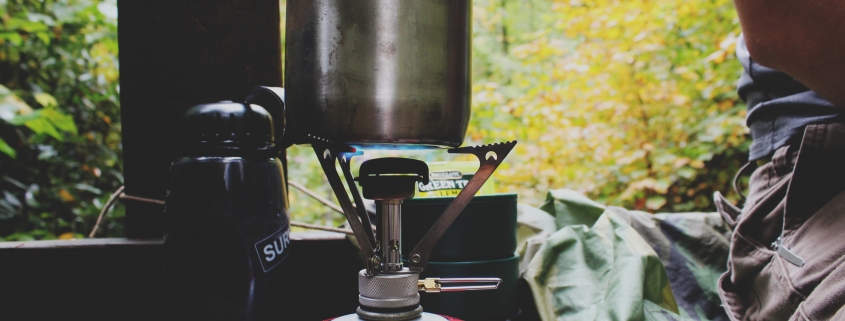Take it from someone who has contracted a water-born infection before. Water purification is something you never want to skimp on. After dealing with Giardia from ingesting improperly “purified” water, I always take water purification seriously.
There are several methods of purifying water. Here are four of the safest ways (when used properly).
1) Filters
There are several types of water filters including pump, gravity, and straws. My preferred method has been gravity filters because of the ease of setting up the filter. Most gravity filters require gathering water in a dromedary, attaching the filter tubing and let gravity take it from there. The unclean water flows through the tubing into the filter. Most gravity filters include several layers of filtration to catch micro-organisms that cause infections in human digestive systems.
A lot of filters will also contain a chemical such as activated carbon to reduce bitter tastes of tannins released from decaying leaves in a water source.
Filters are a favorite of many outdoors people because they have the least negative effect on the taste of water, and they can be lightweight and easily packable. They’re also budget friendly, because they are multi-use and replacing parts is easy and cost-effective. To lengthen the life of your filter, gather water from clear water sources so that sand and debris does not clog the filter.
Filters do not protect against viruses, so they are not a typical preference of people traveling to regions with higher rates of virus contamination.
2) Chemical treatment
The two most common ways of treating water with chemicals are iodine and chlorine. Most people bring these purification types with them as backups if water filters break. They are lightweight options, though not reusable and can take up to several hours to be effective in treating water – longer if the water is cold. Chemical treatments for water leave a distinctive taste, which can be counteracted by neutralizing tablets or water flavoring. Iodine does not protect against
Cryptosporidium, but does purify most other protozoa.
3) Boiling
Boiling is effective when used properly. It’s not a common purification method anymore, except as a backup method or in specialty trip situations. A rolling boil must be reached for a minimum of one whole minute, or three minutes for higher elevation (when in doubt, go longer). This is time and fuel consuming. In addition to the time to reach a full boil, you then have to wait for the water to cool to a drinkable temperature.
This purification method can be used for murky water, and then strained through a clean bandannas or other fabrics to filter out debris and sand.
4) UV Light
UV purification is a relatively new method and is not a common practice. It works by killing bacteria and viruses. UV light purification is usually in the form of a “pen” that is run on batteries. The light end goes directly into the water bottle or dromedary and either stirred or shaken. It is rarely used by itself, because it does not filter out any chemicals or debris in water. UV light purifiers are also expensive, and many people do not trust using anything that requires batteries in the back country. It is important to bring a backup purification method if this is your primary.
When planning a trip into the back country, it is important to plan water sources along your hike. Take note of any trail guides that warn of unreliable water sources, as they can disappear in dry seasons. Whatever your preferred method of water purification is, always take a backup and follow instructions carefully.
I was lucky that when I contracted the parasite, I recognized the symptoms early and was able to seek treatment early on. Some water-born pathogens can cause life-long complications, dehydration, and even death if left untreated.




